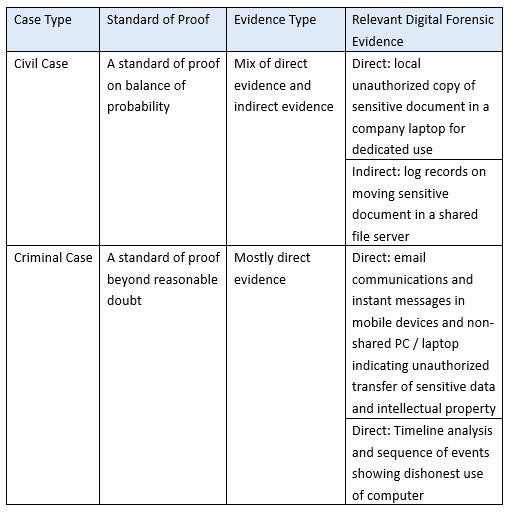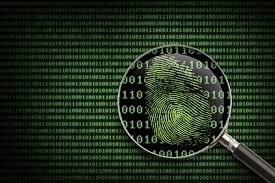Winning Court Case with Proper Digital Evidence
Civil and Criminal Cases
Civil law and criminal law are two broad and separate entities of law with separate sets of laws and punishments.
According to William Geldart, Introduction to English Law 146 (D.C.M. Yardley ed., 9th ed. 1984),
"The difference between civil law and criminal law turns on the difference between two different objects which law seeks to pursue - redress or punishment. The object of civil law is the redress of wrongs by compelling compensation or restitution: the wrongdoer is not punished; he only suffers so much harm as is necessary to make good the wrong he has done. The person who has suffered gets a definite benefit from the law, or at least he avoids a loss. On the other hand, in the case of crimes, the main object of the law is to punish the wrongdoer; to give him and others a strong inducement not to commit same or similar crimes, to reform him if possible and perhaps to satisfy the public sense that wrongdoing ought to meet with retribution.”
Examples of criminal law include cases of burglary, assault, battery and cases of murder. Examples where civil law applies include cases of negligence or malpractice.
In both civil and criminal trials, evidence is used by both parties to build and support that party’s case, or theory as to what happened and who is responsible. Evidence includes testimony from witnesses, exhibits, digital evidence, and other items. All types of evidence are either “direct” or “indirect / circumstantial.”
Direct Evidence
Direct evidence proves or disproves a fact directly. Perhaps the most commonly-known type of direct evidence is eyewitness testimony, where a witness describes exactly what she saw, heard, or experienced. For instance, in a personal injury case, suppose that the injured plaintiff was crossing the street when the defendant hit her with his car. One type of direct evidence the plaintiff might use to prove that the defendant was the one driving might be the testimony of a bystander who saw the defendant clearly as his car hit the plaintiff.
Indirect Evidence
Indirect of circumstantial evidence, by contrast, is evidence that does not point directly to a fact. Instead, an inference must be made that links the circumstantial evidence to the fact the party using it is trying to prove.
For example, suppose that in the car accident described above, the injured plaintiff offers into evidence a photograph of the defendant’s car, taken at the accident scene. The front of the car is crumpled. The plaintiff offers the photo to prove that the defendant hit her with the car.

Conclusion
If the digital forensic investigator can collect admissible and relevant digital evidence building the case on hand, then such digital evidence will be duly considered and accepted. Thus the forensic investigator can fulfill his / her overriding duty to the court.

